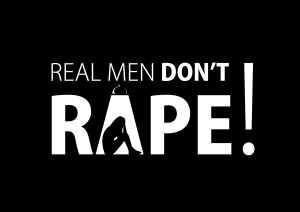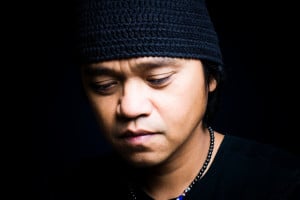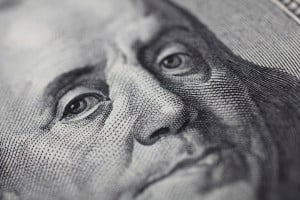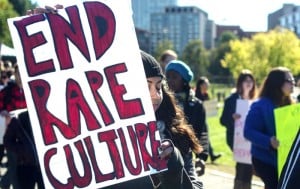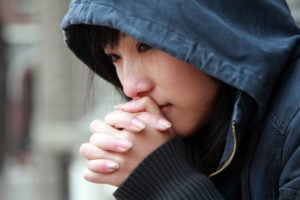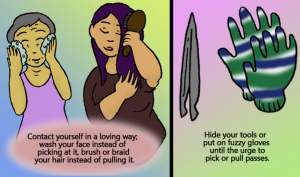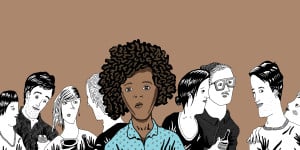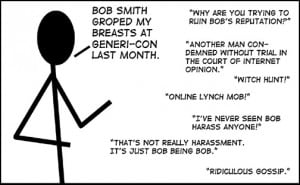Up until a few years ago, I used to view racism the same way I think a lot of people still do. There were numerous times I, as Black man, was treated differently than my white friends, or I ran into situations where I was approached as if I were a threat when it wasn’t warranted.
Despite this, I felt racism “wasn’t that bad,” and I would shrug off these occasions without really giving them any serious thought.
When I became frustrated by mistreatment, I would rationalize and ultimately dismiss my bitterness by thinking about “how far we’ve come” as a country when compared to the days of KKK prominence and the Civil Rights Era.
Like many others, I uncritically consumed the diet of miseducation this nation routinely feeds us about race. It’s through this process that I had become immune to recognizing the root sources for most of this nation’s racialized social friction and instead only saw surface appearances.
Then Trayvon Martin was murdered.
I saw the way this 17-year-old boy was portrayed as a “thug” by news sources and how his character was assassinated all over social media. It was horrifying to see how easily people trivialized and even mocked the value of life when it was attached to blackness. Still, I said nothing.
To an extent, I kind of sided with those who felt Trayvon’s story was sensationalized and acted as a way to unnecessarily distract and divide the public along racial lines.
And then something different happened. Following the execution of Michael Brown, I noticed a change within myself.
Never before did the phrase “sick and tired of being sick and tired” resonate so profoundly for me, and I immediately recognized this attitude and determination in social activists who looked like me.
The Black community in Ferguson assembled a prolonged campaign against racial injustice that led to nationwide protests.
This campaign has been a departure from traditional organizing efforts. We’re used to the restrained, compromised action of church ministers and associated dignitaries taking the forefront of matters related to social change for Blacks.
But in our contemporary era, that strategy has been discarded in preference of more aggressive, interventionist efforts widely spearheaded by young adults. While this borrows from past movements like the Student National Coordinating Committee, it’s still a radical break with what this recent generation is used to seeing when it comes to combating anti-black oppression.
Following the not guilty decision of George Zimmerman and during the Ferguson unrest, a single statement united those confronting the surplus of meaning attached to white identities and the deficit of worth applied to people of color: Black Lives Matter.
The Black Lives Matter hashtag and the corresponding movement opposing racial imbalances has sparked a national dialogue that’s been long overdue.
There’s perhaps no greater indication of this movement’s need than the backlash earned from simply stating “Black Lives Matter.”
Black Lives Matter advocates expose instances of white privilege and racism within our white-oriented culture. As a result, those wishing to deny these serious and widespread problems react with venom.
Philosopher Friedrich Nietzsche recognized this human tendency to avoid information that conflicts with what we want to believe, saying “People don’t want to hear the truth because they don’t want their illusions destroyed.”
It’s important to pay close attention to our motivations behind what we believe. Here are the four main reasons why people dislike Black Lives Matter social justice activists. Let’s explore them so we can work towards greater awareness and social progress.
1. Black Lives Matter Disrupts the Status Quo of What Our Culture Has Decided Is Normal and Acceptable
When we talk about the status quo, we’re describing the existing arrangement of accepted values and behaviors that make up the current social and political landscape. In other words, it refers to what we generally acknowledge as being the normal ritual of everyday roles, duties, procedures and expectations.
The very nature of social movements pose a challenge to this baseline of social order.
For example, up until 1848, the oppressive power, dominion, and privilege of men at the expense of women was commonly accepted by the public. Any individual involved with conventions, coalitions, or protests promoting gender equality were often mocked, shamed, insulted, abused, or imprisoned.
Despite being fully justified, women’s rights activists were branded deviants and criminals.
This is because those seeking social justice endanger the status quo, what many accept as a reference point for the way things ought to be.
Today feminists still fight for liberation from patriarchal beliefs that contribute to the ways they’re perversely valued as objects and routinely taken advantage of in various social and sexual situations.
And yet, those who dare to demand radical changes to the way our society regressively thinks about and act towards women are greeted with ridicule, victim blaming, bullying, and violence.
Those who prefer the established system will surely take issue with anyone who seeks to burn it all down to the ground.
And it should come as no shock that those who declare no serious problems exist, or ignore pleas for equality, or defend what they imagine to be their right to mistreat women, happen to benefit from these social structures. This “coincidence” is to be expected.
It’s rare that those who hold an elevated social position are willing to abandon it for the greater good.
Compare this context with that of Black America and the Black Lives Matter Movement.
Many wish to frame the struggles Blacks have endured in this country as being bygone matters mainly resolved during what’s commonly referred to as the Civil Rights Era. This despite campaigns by Blacks championing fair and humane treatment both before and well after this designated sliver of time.
But because we no longer function as living tools for slave masters, or because we’re no longer required to sit at the back of the bus, or because the extension of white terrorism known as KKK is no longer as prominent, we’re told things aren’t that bad.
As if comparing today’s injustices with yesteryear’s more intense climate of social malice in any way condones or lessens the distress and imbalance experienced now.
BLM activists know better. They’ve also learned from the past, which is why they refuse to play by the rules of respectability politics in preference for more raw, direct action protests.
These visionaries wear hoodies, not suits. It’s a decentralized network of individuals that doesn’t rely on the support of the Black Church.
Like feminists, the BLM movement pursues major overhaul to a culture that devalues their humanity. And similar to the opposition feminists face, the pursuit of liberation by BLM members is considered fanatical. They’re also slandered, being labeled terrorists, criminals, thugs, and a cult.
What doesn’t help white America’s thoughts about the social and political engagement of BLM are sanitized misrepresentations of civil rights work from the 60s and 70s. Revisionist history will have you forget that those now-praised advocates for change, including Dr. Martin Luther King Jr., were also considered controversial and condemned for their interruptions to the ordinary tempo of a society that disregarded their suffering.
While hindsight is a beautiful thing, how we celebrate the triumphs of the past after the fact doesn’t erase how those working towards change are often vilified in their own time. Similar to the way Malcolm X scared white America, the message of the BLM movement is seen as a threat to the point that even declaring “Black Lives Matter” is rendered controversial.
This country has a tradition of regarding missions to overturn inequality as sacrilege.
Because many prefer the “post-racial America” narrative, information that conflicts with the “we’re past all that” belief is usually ignored or justified in a way that allows the illusion to continue.
Black Lives Matter has successfully produced a culture-wide rude awakening. Both directly and indirectly, their efforts have sparked more honest conversations about race and racism in the US. BLM’s in-your-face style of protest makes it hard to simply overlook.
This upsets people who prefer to diminish or deny the reality of racial inequality that was all but resolved in the heyday of Dr. King and Rosa Parks.
2. Black Lives Matter Asks White People to Confront Their Role in Anti-Black Racism
Earlier I mentioned the efforts of Black Lives Matter activists creating a “rude awakening.” The problem is, there’s always been a strong tendency for white people to focus more on the “rude” and underplay the “awakening.”
In other words, many attempt to dismiss the knowledge shared as they bitterly react to the “rudeness” of having their worldview unsettled.
Academic and multicultural educator Robin DiAngelo created the term “white fragility” to describe this common freak out response. She defines white fragility as being “a state in which even a minimum amount of racial stress becomes intolerable, triggering a range of defensive moves. These moves include outward display of emotions such as anger, fear and guilt, and behaviors such as argumentation, silence and leaving the stress-inducing situation.”
Few things will earn the ire of white fragility like self-determined young Blacks willing to defy expectations and authority demanding complicity in their own oppression.
To simply exist as a Black individual in this country is provocative. To be Black and openly oppose white supremacy is considered anathema by the white gaze.
White fragility surfaced in the white liberal backlash to BLM interrupting Senator Bernie Sanders.
White fragility motivated Hillary Clinton’s brusque and knee-jerk responses when confronted by BLM activist Julius Jones.
White fragility continues to propel Donald Trump’s rudderless and unapologetically bigoted presidential campaign.
White fragility prompts the superficial “but all lives matter!” crusade.
White fragility purposely sabotages earnest racial discourse. Further, it cleverly attempts to place undue emotional labor on Blacks, which is why it’s also be considered a form of violence. From the vantage point of the privileged identity, it’s incredibly difficult to see why change is necessary.
BLM rightly highlights social imbalances.
White fragility inhibits the potential for social growth because these feelings care more about sheltering white egos than it does confronting deep-rooted sources of racial disharmony.
Since we know power concedes nothing without confrontation, it’s important white fragility isn’t used as a deterrent from recognizing the need to change the way anti-blackness greatly informs cultural norms.
3. Black Lives Matter Shines A Spotlight on Everyday White Supremacy
White supremacy is the view that white people are superior to other races. But it isn’t enough to just say that. We must understand the context to why this attitude exists.
White supremacy is a complex social phenomenon. This belief was cultivated when Europeans began to colonize the world. It was this value system that justified the “natural” process of “superior” whites conquering and dominating “inferior” non-whites.
There was never any “Great Intervention” that formally and robustly corrected this way of thinking. As a result, these white supremacist attitudes continue to permeate our entire culture.
When we discuss the state of social institutions that permit inequitable practices like redlining, mass incarceration, and the wanton murder of unarmed Blacks, it shouldn’t be said these systems are “broken.”
That’s false.
Comprehending the framework and history of white supremacy reveals these functions of racial injustice operate exactly as intended.
White supremacy has allowed white privilege and anti-black propaganda to thrive in a society where the majority outwardly acknowledge racism is wrong. It isn’t due to whites somehow being inherently evil. Instead, it’s the reality that white supremacy is in the lifeblood of this country.
People often cite their good intentions without considering how drastically our culture programs the way we think on a fundamental level. Since it is impossible to exist outside the influence of society, we’re subject to all the ways white supremacy impacts daily life on a social, economic, and political level.
White supremacy isn’t only embedded into the tapestry of our culture, it is part and parcel to our subconscious perceptions. This necessarily prejudices the way white America perceives the objective and representatives of Black Lives Matter.
Because we live in a society that stigmatizes blackness, Black people working together to call out prejudice born of white supremacy leads to apprehension and antagonism.
BLM shines a huge floodlight on white supremacy. This causes discomfort and infuriates a considerable chunk of the population who would rather these frequent grievances fade to black.
4. Black Lives Matter Refuses to Shut Up
Black Lives Matter activists want change and they want it now. You won’t pacify their strategic interventions with negotiations for halfway freedom. They are outspoken and tenacious in their quest for liberation from white supremacist beliefs and institutions that negatively impact the lives of Black America.
These aren’t punk kids who cause political disruptions as a form of entertainment.
BLM protestors are concerned people who believe both the civil and human rights of all Black lives should be held to a higher standard — and their work isn’t in vain.
It’s BLM that pressured the federal government to amend their process of militarizing police departments.
It’s BLM that motivated the FBI to embark on an improved effort to track fatal police shootings.
It’s BLM that amplifies awareness about police violence against Black women through the #SayHerName campaign.
It’s BLM that helped achieve wider recognition for issues the Black trans community face.
It’s BLM that launched the Police Union Contract Project — an extension of Campaign Zero — to hold law enforcement accountable.
It’s BLM that’s inspired a fundamental shift among millennials that has led to student protests over discrimination and racial insensitivity.
It’s BLM that’s forced white America to consider and explore the ways racial injustice and anti-blackness permeates the interpersonal and institutional spaces of this nation.
BLM isn’t going anywhere, and that angers white America.
***
Black Lives Matter is seen as an annoyance, and because of the nature of their mission, they are even seen as a terrorism organization. Not because of actual terrorist activity, but because of their refusal to cease exposing, scrutinizing, and publicly shaming the transgressions of white supremacy.
They are a counterculture group in that they critique some of the shallow, mass marketed notions about this nation that just isn’t true. And while the way they go about criticizing our country’s wholesale complacency may be off-putting for some, the method is unmistakably effective.
I will repeat Nietzsche’s quote: “Sometimes people don’t want to hear the truth because they don’t want their illusions destroyed.”
Black Lives Matter is demonized because they’re working to shatter popular false impressions so that racial justice is actually served and a more equitable future may be possible.
[do_widget id=’text-101′]
Sincere Kirabo is a Contributing Writer for Everyday Feminism and is a writer, activist, and the Social Justice Coordinator with the American Humanist Association. He’s a self-described philosophile with a high regard for Sikivu Hutchinson, Kimberlé Crenshaw, Shirley Chisholm, and James Baldwin. When he isn’t writing, Sincere enjoys road trips, trying to beat Super Mario Bros with his son, and learning about history. Sincere’s work can also be found on The Humanist and Patheos. Follow him on Twitter @sinkirabo.
Search our 3000+ articles!
Read our articles about:
Our online racial justice training
Used by hundreds of universities, non-profits, and businesses.
Click to learn more
Most Read Articles
- « Previous
- 1
- …
- 30
- 31
- 32






